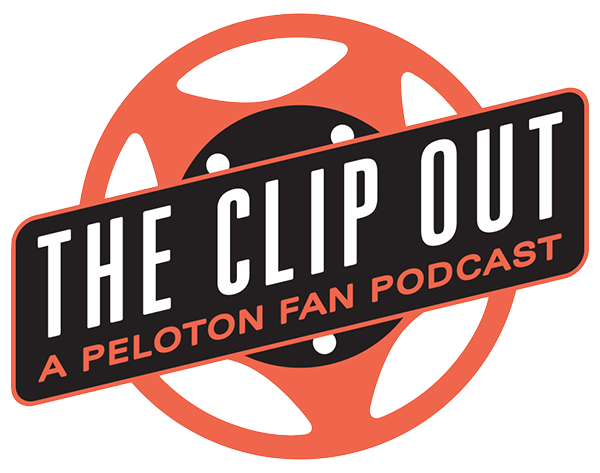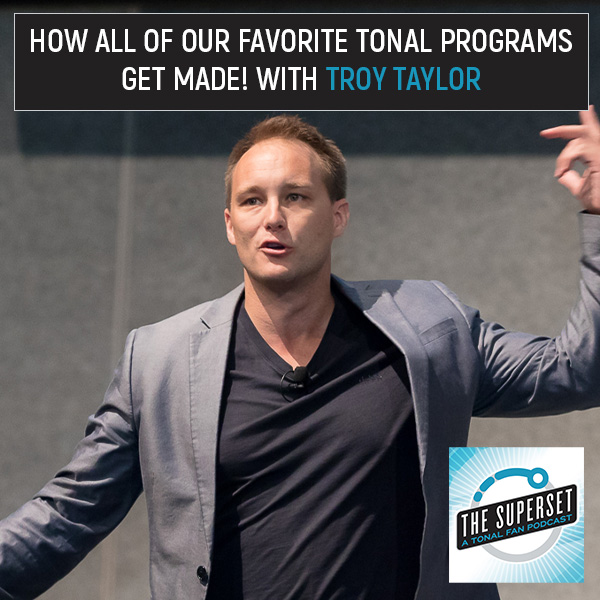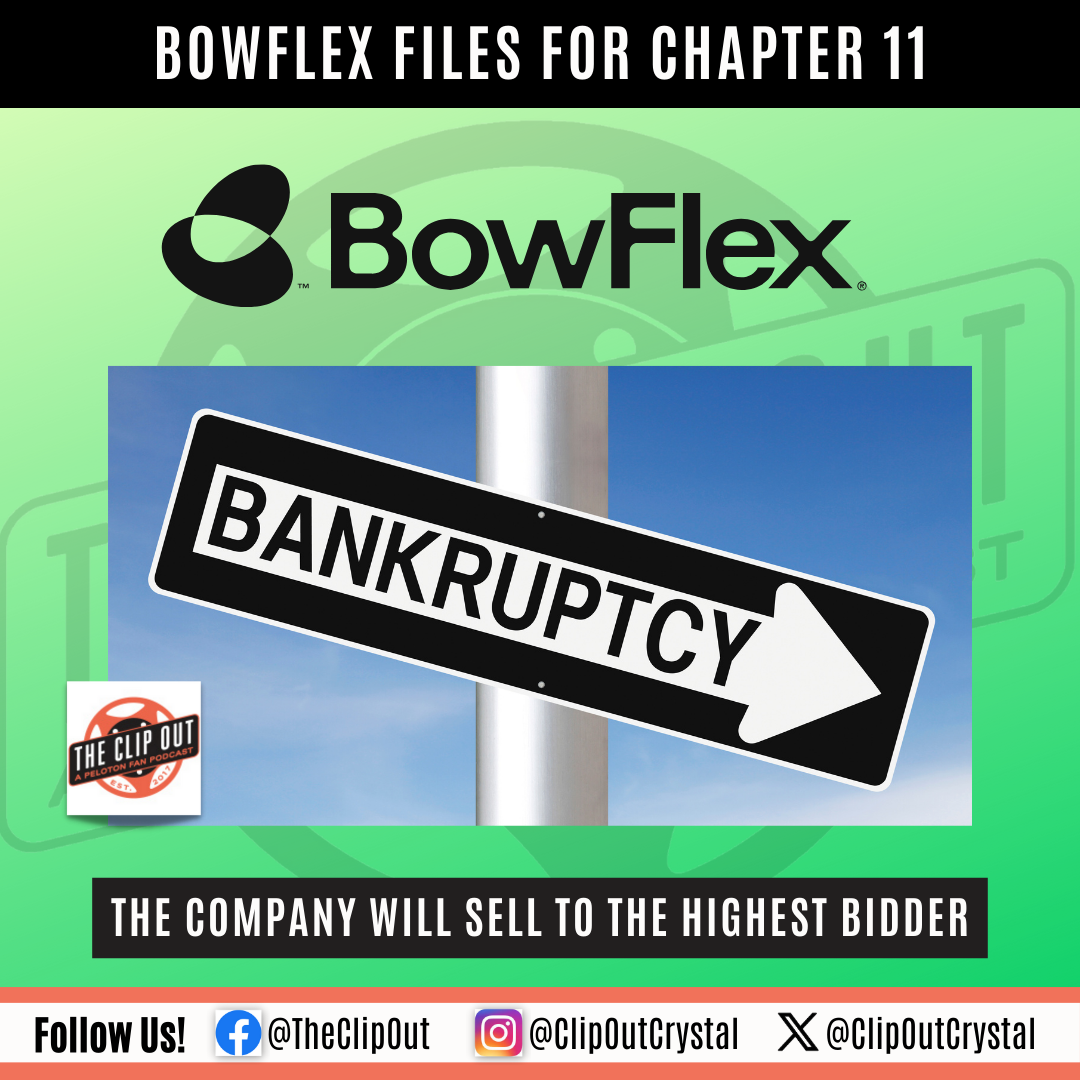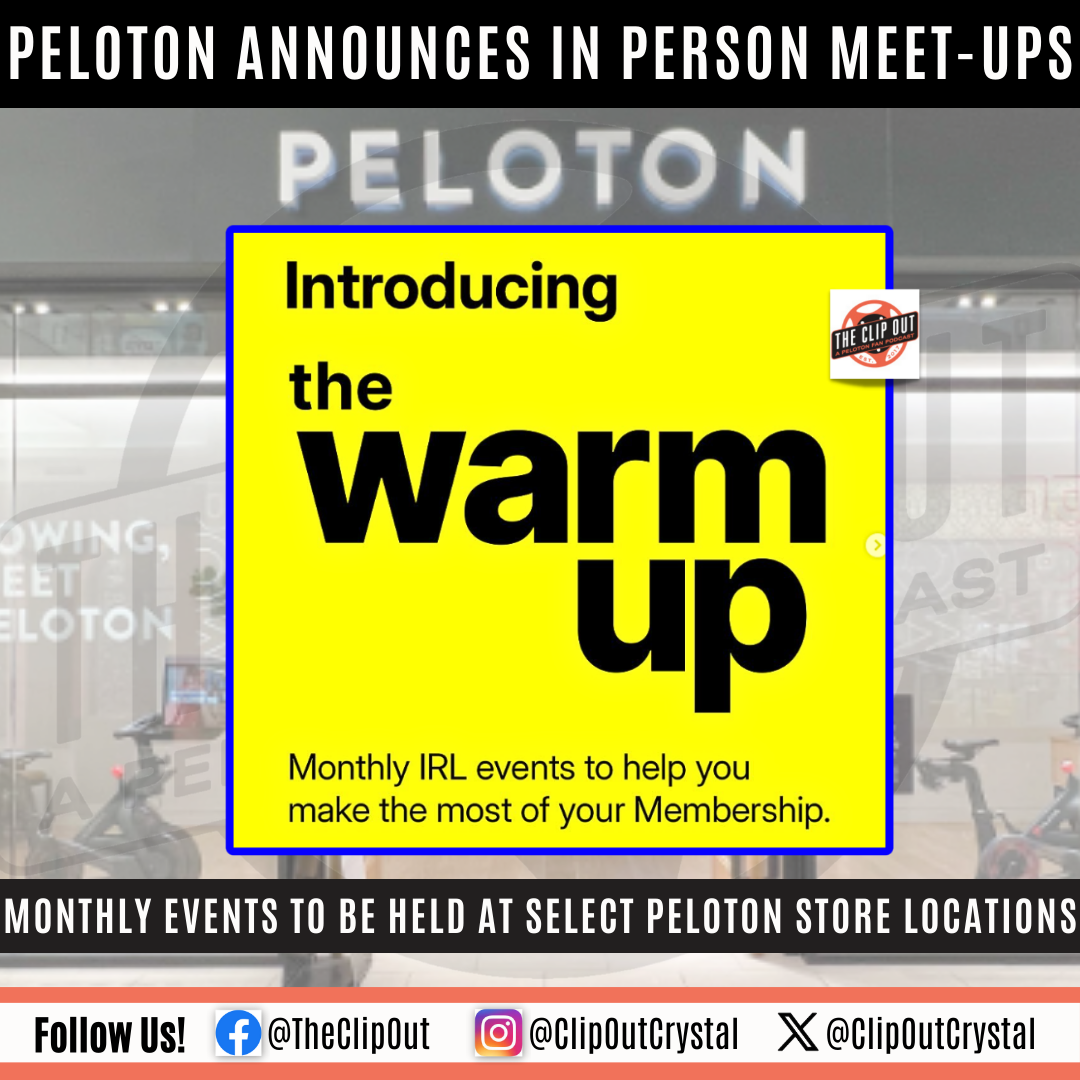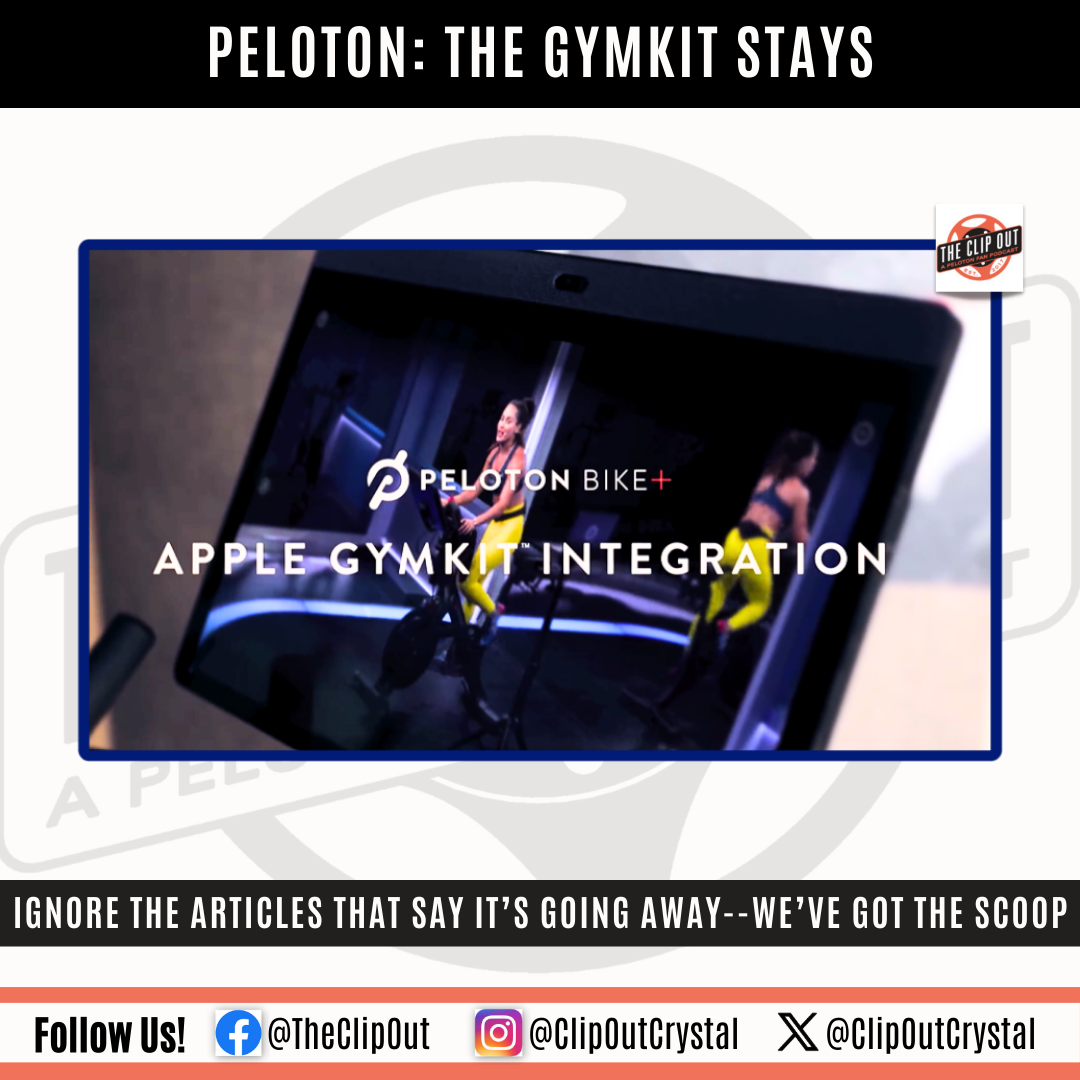How All Of Our Favorite Tonal Programs Get Made! With Troy Taylor
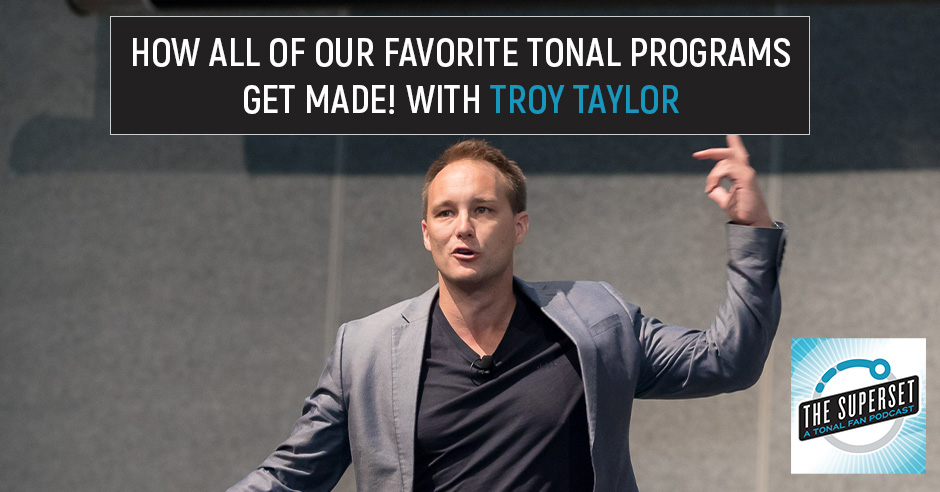
- Sculpt & Shred is almost here.
- We spotlight features you might not be aware of like: * Ability to track progress on Tonal and in the app. * Track Muscle Readiness. * Smart View. * Active Recovery. * Tonal In-Home Demo.
- Tonal featured member John Sill on their website.
All this plus our interview with Troy Taylor.
—
Watch the episode here
Listen to the podcast here
How All Of Our Favorite Tonal Programs Get Made! With Troy Taylor
Welcome to episode 51 of the show.
I am in a silly mood because we are heading to Disney World.
I love Disney.
I know how I get when we are Disney-bound. I’m one of those adult Disney people that people make fun of on the internet.
It’s because you don’t wear the outfits. If you wear the outfits, then I’m going to make fun of you but enjoying yourself? No, there’s nothing like that.
I love Disney but I don’t show up in outfits and stuff. Most people do.
Honestly, even the people that do, I might chuckle at them but I don’t point and laugh.
We’ve all got our jam. I’m a grownup who loves going to Disney World. People want to mess about that thing.
There’s no joy in their life.
We should say before we dig into the episode proper that Sculpt & Shred is almost upon us.
June 5th, 2023. I’m a little annoyed at Tonal. Didn’t you check our vacation schedule before you did this?
It was rude because we leave for vacation on June 5th, 2023. This is the kind of program I typically like. I ended the program I was doing, which contrary to what Tanysha Renee thought I did, Cycle Sync Strength to its completion but now, I am between programs. I didn’t want to start a program and then have to leave it hanging for a week while I was gone.
Do you know what’s ironic, Tom? I did not finish the Cycle Sync Strength. Here’s the deal. I am in perimenopause. Yes, Tom. It’s happening.
You’ve been telling me that since the day we met. I believe it was in your match profile where you were like, “Careful, boys. This one’s in perimenopause.” I had to Google it.
It’s not true but it has been going on for a while. It’s starting to ramp up.
You’ve been telling me that since the Obama administration.
Get this. My cycle ranges from 23 days to 28 days or longer. You never know what you’re going to get. It’s a fun surprise.
Your lady parts are like a box of chocolate. You never know what you’re going to get.
I started this thing on the actual first day of my cycle but then I got injured in the middle of it. I hurt my back and then my cycle was only 23 days long. It’s all messed up so I stopped. I was like, “We’re leaving in a couple of days. I give up.”
The new program will be Cycle Sync Strength perimenopause and it’s a random number of days.
It would have been fine. You took up that third week and then I never got the third week. I was like, “PMSing is bad. I don’t think I can handle the third week.” You’re supposed to do this in your fourth week. I was like, “I don’t think I could do this.”
That third week was no joke. One time, it was more cardio based and they were shorter programs, sessions or whatever they’re called. That week for me was not a big deal.
It’s because you didn’t have your cycle.
I’m not trying to be like, “Oh, girls.” I don’t mean like that. It was not just what I’ve been doing historically.
No, I get that. Maybe you have a little sympathy for those of us who do feel that crap that we need to pull back that much.
That third week was a woof.
Fred Tucker agreed that it was also a woof.
Fred Tucker has been doing the same things. He’s been mirroring what I do and he was like, “What in the holy hell have you gotten me into?”
What are you doing while you’re in between?
I’ve been doing one-off. I’ve been doing the Platinum Six one-offs. That’s a lot of volume. The spinal tap goes to eleven.
You have been very focused on growing your muscles and that is perfect for you. I was on a MetPro call. One of our readers who happens to be my MetPro client also was like, “I saw a picture of Tom and his muscles are getting so big.” I swear to God, she said that.
Nobody on the internet is looking at my muscles.
She is. I’m telling you that happened.
That’s what you get with Tonal and MetPro. Eating is a very important component.
You can’t out-exercise a bad diet.
Back to Sculpt & Shred, which is what I will be starting the day after I get back from Disney.
I can’t wait to try that one. I’m super excited about it too. I can’t wait to see what this upper body track and the lower body track are. I need to see it to fully comprehend what they’re talking about so I can’t wait to try that.
It’s like a choose-your-own-adventure novel.
It’s good for everybody, whether you’re trying to improve your athletic performance, look good on the beach or lose a little weight. Anybody can get benefits out of this Four-Week Fast Track Sculpt & Shred. It’s for everybody.
Other than that, what pretell do you have in store for people in this episode?
We’re going to go over some features that get lost in the shuffle on Tonal. We’re going to talk about that. We are also going to talk about some Tonal highlights and other new content that’s coming when we talk to Troy Taylor. He is going to be visiting with us and we are going to talk about so many things from the Tonal’s Strength Institute, including new things in the pipeline. It’s a very fun episode coming up.
It’s also fun to talk about the thought process in science that goes into Tonal. They’re not just like, “Get some biceps. Do some curls and a bench press maybe. We’re done here.” No. It is massively scientifically researched and a lot of thought goes into it as to what will work most efficiently for you. If you like to see how the sausage is made, we got some sausage for you. Come take a look at our sausage.
That’s not a sentence I thought you’d ever say. There it is. I think that was on your match profile.
It worked. You are here.
Before we do all that shameless plugs, don’t forget that we’re available on Apple Podcasts, Spotify and Google Podcasts. Wherever you find podcasts, you can find us. While you’re there, be sure to follow us so you never miss an episode. You can also leave us a review. That’s super helpful. You can find us on Facebook at Facebook.com/SupersetPodcast.
If you start Sculpt & Shred, swing by and let us know what you think of it. If you’ve done Cycle Sync Strength, regardless of whether or not you have the parts it’s designed for, swing by and let us know about that. You can also find us on YouTube at YouTube.com/TheClipOut. That’s the name of our other show but all of our episodes live on that channel so please check out that as well, where you can watch all of these. There’s all that. Let’s dig in, shall we?
We shall.
In the interest of full disclosure, that sweeper was a dirty lie.
I feel like that was a little misleading, Tom. We only have so many names.
We think of all the things we’re going to need.
Sometimes we need other things.
We’re going to talk about maybe some features that you weren’t aware of or maybe you forgot were out there that you could find useful. We thought we would recap some of those for people because Tonal does a lot of cool different things that maybe aren’t always on top of your mind.
This is a good idea. I was talking to a friend of my daughters and they were going to try out the Tonal. They had so many questions and I found that it was hard to remember all of the cool things it does. This is helpful and I will be sending this episode to them.
They’re not going to read. They’re still teenagers. There’s only so much you can expect.
I’ll try. First of all, let’s talk about the Tonal mobile app. Tom, you’re the worst at downloading any mobile apps. You resist and I don’t know why.
I’m like, “I don’t need that app.”
You do.
I didn’t download the app for probably the first two years of using the Tonal. They love hearing me say this. You’re still doing better than the Peloton we got down here is doing.
It still hasn’t touched any of those things.
I was like, “I’m at the machine. When I’m not at the machine, I’m not thinking about this. I don’t need this.”
How many times have you gone in and looked at things?
At least four.
It’s more than that.
At least five.
Some of the things that I find we both look at are moves that we did in a particular program like, “Have I done that move?” Something comes up when we did an interview and we were like, “What is this Resisted DNS Star?” I like being able to go into the app and see if I have done a move so I can go in and look at all the moves I’ve ever done because I have a moving library.
You can also see what moves you haven’t done. If there’s something that you wanted to check on or something you want to try out, you can do that. Probably more important is being able to see how you’ve changed over time. You’ve progressed. For example, when I first started, my strength score was a lot lower than it is now.
When I first started, my strength score was at least four.
The number of times you’ve used the app is how many your strength score was. That’s not true. I like that you can go into the app and see like, “My strength score is improving over time.” You can then drill down into that and see, “How has my upper body or lower body increased over time compared to my core?” We were talking about this, Tom. You were like, “My core is my weakest area.”
She then punched me in the stomach. She’s like, “Now I know your weak spot.”
For me, it’s my upper body. My core and lower body are close together but my upper body is not. It sucks because how many times have I told you of all the ‘80s movies I’ve watched and I realize that upper body strength is so important.
They’re always climbing a rope or hanging onto the ledge of a building.
Also, an airplane or a helicopter. You need your upper body strength and I am not prepared. Now I know because I can see exactly how far I’ve come and I still have increased my upper body strength even though it’s not where I want it to be. They have all these other reports. That’s my point. It’s very cool. You can also look at any of your workouts and you can see what your heart rate was, your range of motion and your total volume lifted.
That is pretty cool because, at the end of the year, you get back this neat report like, “Here’s how much you lifted over the year.” It’s 7 million pounds for Tom. He lifted a redwood tree or something ridiculous.
I am not at 7 million pounds.
I don’t know but you lifted a lot. It’s amazing how much every day doing something adds up to this mega accomplishment by the end of the year, seeing those daily and being able to go into your report, look at it and compare, “What was my heart rate during this workout versus this other workout?” It’s amazing. That’s cool stuff.
You can follow people there.
I was giggling because Fred Tucker was like, “I want Crystal to return my follow.” I haven’t added a follow in forever because whenever Tonal first released the ability to follow, I went through and followed everybody. I have not gone back in a while.
I followed almost nobody. I just followed my fourth person. That’s a real and accurate number four.
You can look at your muscle readiness, which we have been talking about a lot in the app. You have been doing the Platinum Six.
It’s because I’ve been doing the one-offs instead of a program. With the programs, I don’t have to worry about that as much because the program says, “Today is your day. Go do it.”
You should be ready. “Suck it up, buttercup.”
It’s already designed for that but doing the one-offs, I have to be a little bit more cognizant like, “Is it counterproductive for me to work out today or to work out these sets of muscles?”
This is a good reminder. If it’s green, everything’s ready. If it’s gray, you need to be careful. You can still work out but they’re like, “We’re pulling back here.” When it’s red, better wait for a minute. Take a breath. Take a moment. Take a day.
When I see red, I got that Warrant song stuck in my head. RIP, Jani Lane. It’s I Saw Red by Warrant. It’s a good song. When I see the muscles are red, I’m like, “I don’t have to feel bad if I don’t do it today.”
Whatever gets you through because if that tells you to stop, that’s fine.
I’m like, “Look at that. I’ve done enough.” I can rest guilt-free.
It’s so true but people also may not realize. Let’s say that you didn’t already have some workouts planned, Tom. You were like, “I still want to workout now even if my muscles are red.” You can go in and filter workouts by what muscles you want to do or filter by what muscles you don’t want to do. In your case, that’s what you would do. That’s amazing to be able to do that. It’s broken up by muscle group. What do you call him?
Little guy front and back. You then got little real guy.
Does he look more real than he used to?
There’s little guy front and back. When it shows you what your next move is going to be, you get little real guy.
Although, it’s sometimes a girl.
It’s a gender-neutral guy. It could be either or. You can say guys in a gender-neutral way.
Another thing that you can do is the Tonal Smart View. This is cool. This is another one you still have not tried, Tom. I have and it’s super easy. All you do is pull up the Tonal app when you’re going to do your workout and your Tonal will automatically connect to your phone. You place your phone nearby so that you are in view while you’re doing your workout. If you have a form correction, Tonal saves it and then sends it to you afterward so you can see what you were doing.
No more bonk and then you’re like, “What does it say?” You turn around and it’s gone.
It’s there but you don’t know what you were doing wrong because you couldn’t see compared to it. Now, you can see the form correctly. Plus, if you are able to put it at an angle where you can see yourself next to the Tonal, you can also check your form the whole time so you can see like, “This is how I look compared to how the trainer looks. I’m doing it right,” or, “That’s not right at all. Let me try again.”
When people ask, “Does the Tonal look at you,” the answer is yes but only if you want it to.
There’s a little camera at the top. You have to opt-in to be able to have the camera in use. You also can get one of those little tiny screen camera covers and close it up.
That way you don’t have to worry about if you remembered or not or if you have something you don’t want them to see. Let’s say you put your Tonal in your bathroom for some reason.
I don’t know why you would do that. I feel like the steam would be bad for the Tonal. Don’t do that. When we talked about recovery, we didn’t talk about one of my other favorite things and that is Active Recovery. Tom, let’s say you were like, “No. I want to work out anyway.” Another thing you can do is go into Tonal and choose full weight for any workout or recovery weight.
What that does is it turns any workout on the Tonal into a recovery workout by lowering it. I believe it’s 60% of what your full weights typically are. This is fantastic, not only from where you’re sore but also when you have an injury or you have been hit by a car and you are coming back from an injury. You need to dive into things slowly. It’s excellent. You can still follow along with any program.
It’s also good if you are following along with, let’s say, a Stacy Sims type of program. If you want to have your hard days and easy days but you still want to follow along with the instructors, this is another great way to do it. This is a fun one. This is trying out your Tonal through the home demo experience. Any of our Tonals can be turned into a demo. That means if you have somebody come over and they’re like, “I want to try this. What’s this iPad on your wall?”
“What is this contraption you have? Is that a mirror?” First off, you’ll be using Tonal so you can wrestle them to the ground.
This is cool because you can have a person try all the things that Tonal does like your digital weights., chains mode, eccentric mode and all those things. They have a one-minute demonstration that does a single move and a taste of a Tonal workout with three moves. The Tonal automatically calibrates the resistance to their ability level like when you originally did your strength assessment and this lets someone new to Tonal know how it feels to adjust those weights in real-time. I love that.
A lot of people are maybe not familiar with Tonal or have heard of it but it’s not super easy to go find one in the wild. It’s a great way to pull them into your world.
It’s a great way to be a salesperson for your machine. You never want to stop talking about it anyway. I don’t. Maybe that’s just me. Lastly, we need to remind people of a hidden little nugget in the Tonal world. You can refer your Tonal to friends and family and they get $125 off of their Tonal purchase and then you as the member get $60 off of your membership. It’s a whole free month of membership. How cool is that?
Are these stackable? Could they also use our promo code?
They can because that is just a referral. I don’t know. Not when you’re first buying it. I don’t think you can. If you didn’t have a friend that referred it to you, you could still use promo code TheClipOut and get $100 off of your purchase but you can’t stack it.
We also wanted to remind you, and we’ve been talking about these in every episode, that Tonal likes to spotlight real-life members. Not too long ago, they spotlighted John Sill.
Whenever he had his kids, he got out of the fitness rhythm.
If they’re time-consuming, their selfish kids are the worst.
This is all about the comeback that he got back into fitness. He was able to do that because Tonal is so amazing that you can do it at home. You don’t have to go to the gym. When you have children, that is a huge time saver. He loved to lift. He wasn’t a person who was like, “I’ll just hop on the bike.” No. He wanted to lift. This allowed him to be able to do that.
The one picture was him making muscles with each of the kids hanging off there so it clearly worked.
He’s doing okay.
—
Joining us from Tonal is Troy Taylor, the Senior Director of Performance Innovation.
Thanks for having me on.
Troy, welcome back. It’s been a little bit since you were here. The last time you were here, it was before the TSI Summit or after. In all seriousness, what have you been up to since then?
I was trying to think if it was before or after the TSI Summit. It’s been a busy probably twelve months or so. We are spreading the performance team across three areas. We are continuing to work closely with our product teams and our designers on software and new product releases. For things like when we release Smart View back in November or December 2022, the team is playing in there. When we are releasing things like Custom by Tonal, there are new features that we’re doing around there and having teams around that piece.
We are continuing to work closely with our coaches on programming and the content and curriculum side to make sure that we got fun and innovative new programming like the Four-Week Fast Track program that we did in January 2023. There is a new one coming up, Sculpt & Shred, in the summer of 2023. There are lots of work on there.
We continuing to work on some of the TSI pieces around research and thought leadership. We announced probably 5 or 6 projects back at the TSI Summit. Working with those academics in terms of getting those studies completed, they’re all done. We are collating those results as they go through peer-reviewed publication processes. It’s a slow winding road somewhat but most of those are in that process. We are also starting some of our data dives into Tonal’s world’s largest strength database and sharing some of those coming up. It has been a fun and busy twelve months for me and my team. We do all of that. I did a relatively small part. I’ll take credit for that work much like Tom does for this show.
It sounds like your whole team did a lot in twelve months. All those exciting research topics, we talked about so many of them in depth the last time you were on but you said they’re done. I want to know if there are any updates.
I won’t go through more because we could cover those. Some of them, I’ll probably highlight. We did a project with Peak Performance Project or P3 out of Santa Barbara. That was specifically looking at our eccentric mode and more athletic performance. Eccentrics have been an elite athlete tool for a long time but it’s tough to do. What we did is a training study with them.
They took in a bunch of college-left basketball players and put them through various protocols around eccentric. The results indicate that Tonal’s eccentric works as well if not a little better than traditional eccentric molding as improving the markers that improve jump performance. That project is in the process of being publicized or in a publication peer-reviewed, the scientific way of getting research literature out of there. That’s super exciting.
We did a project with the University of Rhode Island, which was comparing Tonal to machine-based resistance. We saw nice increases in strength, power and performance with Tonal compared to machinery things. It is more interesting than that to some extent. While that’s pretty interesting, we saw much higher levels of engagement and enjoyment with training with Tonal, which I’m not overly surprised with but that’s an interesting angle.
Tonal’s eccentric works as well as if not a little better than traditional eccentric molding in improving the markers that improve jump performance. Click To TweetIt’s great to get big gains and things but we need to enjoy our training. We certainly saw higher levels of engagement. A bunch of their participants were even buying Tonal. They were like, “I love this device.” Maybe it’s for sales technique but it was a research project with some sales. That was super exciting. That’s also in the publication.
I’m curious. Do these work regular studies where you took one group of people and put them on a Tonal and took one group of people and put them on free weights or something like that?
This is an independent third party so I get the results. My team and I are not involved in the study. The University of Rhode Island, P3 or any of the projects, the teams that ran them run them independently. We give them some money to run the study. We agree on a broad topic and then they go and run it. The results are what the results are. We don’t get to choose what they are or we don’t get to insert data as a final report of, “These are the things that we found.”
That was a two-subject group study so it’s different groups of 12 to 15 participants. They would train for about 4 to 8 weeks, if I remember correctly, on machine weights, doing very similar exercises to Tonal. Another group would train on Tonal. They test both pieces of equipment at the end. What we saw is training increased performance on Tonal but also increased performance on the machine-based performance whereas the machine weights only increased to a small extent on the machine and didn’t increase on Tonal. It is a crossover study. It is fascinating independent studies where there are two separate groups and they run through there.
Depending on when this is published, on June 2nd, 2023, we are at the American College of Sports Medicine. It is a big conference for the fitness and health community. We’re going to be sending some of our internal data and sharing some of that. We’ve done some analysis. We’ve done one project on Four-Week Fast Track in January 2022. That shows you how long the academic process takes. We looked at live virtual workouts compared to on-demand workouts and the relative increases in cohorts that did that.
Are you saying that people work harder on one than another?
People make great gains either. If you can remember back then, because I know you took part, Tom, there was a benchmark workout at the start and the end of that Four-Week Fast Track. We saw greater improvements slightly, not massively. Both groups made big improvements between the mock workout at the start and the end.
The group that did primarily live workouts made greater workouts than the ones that did slightly on demand, which is an interesting take on a thing. It is the same workout, the same suggested weights and the same thing but something about the community element of doing it live, maybe there were some slightly greater results in that. We’re publishing that and sharing that.
We also have done an analysis on our estimations of maximal strength that is estimated on RMs. We took a big section of our membership and then looked at people that had done neutral grip, deadlift and bench press. They have done at least twenty of those sets. We looked at their estimated strength. The first of it, we looked at how strength and power change over the lifespan. We looked at a bucket from 20 to 30 rounds, 30 to 40, 40 to 50 and 50 to 60. 60 to 60-plus was the last bucket.
There’s a fair amount of research in the more traditional sense that shows that strength generally increases a little bit up to around 30 to 40 and then decreases by 1% a year and 10% every decade of the rest of your life. Power does a similar profile but decreases about twice as much. That’s generally been studied. They study strength by grip strength. It’s not a particularly practical method or a very small group. We took something like 15,000 of our members in looking at this. We show the same profile, which gives us valid ways for our estimations. This is training data. We are not physically testing. Our training data show very similar training, which gives us good confidence.
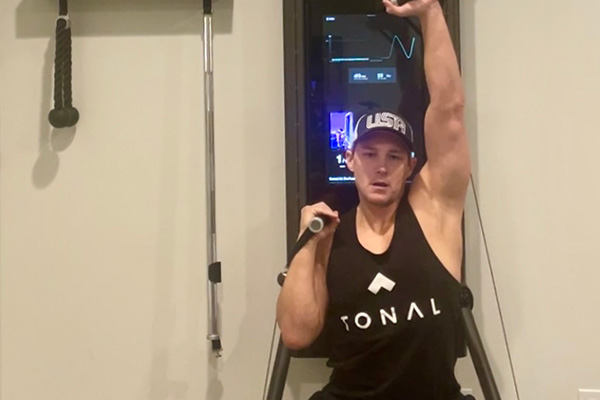
We wanted to go a step further and see how strength and power change with Tonal training across the board. I don’t know what you did in training. You could have been doing our programs. You could have been free lifting. What are normal changes for people over that period? It doesn’t matter if you’re 20, 30, 40, 50 or even 60, we start seeing about 20% to 25% increases in strength and about 50% increases in power over about the 8 weeks before we measured your maximum increases. We’re seeing nice increases in strength and power.
There are more significant increases in power than strength, which has some interesting implications for active healthy aging. There’s a big movement around the role of strength training in healthy active aging but particularly the role of power. It’s the power that allows you to walk upstairs and get out of your chair after you’ve been sitting for a while. It doesn’t seem like power but it is that force times velocity component. We see nice increases.
We see a slight trend for relatively larger increases in some of our oldest members. They start from a lower baseline because of age-related declines but we can show that Tonal makes some big improvements in people’s strength and power. That is across all age ranges but I’m most excited about some of the increases that we see in some of our oldest members and the potential implications that has for their health and wellness and their health span as much as lifespan. We want to live a long time but we want to live healthy active lives. To be able to show that Tonal training helps improve that is pretty awesome.
I feel like there are a lot of older people. This is changing through younger generations but people who are in their 60s and older, there are a lot of people that feel like they can’t get stronger. They feel that time has passed them. To hear the proof of the exact opposite is so exciting to me. I love hearing that. I hope more people take that to heart because I genuinely believe that that’s one of the things that keeps us young longer. That’s awesome for people to be able to do.
It would be great if you were starting from a higher baseline and you’ve been training in your life. For sure, I’m going to promote it. If you haven’t, it is not too late to start. We show these increases in strength and power. Our “weakest users”, relatively, are making some of the biggest increase post-menopausal. They’re not in the ideal hormonal state to put on much of that but they’re getting stronger, both males and females across all things. That has got super exciting implications.
When it comes to the research that you’ve done so far, how does Tonal approach training and programs that are impacting this wide variety of members? You have people that are in that post-menopausal but you also have people in their 20s and 30s.
It’s a unique opportunity. It’s super exciting for someone like myself that loves health, fitness and wellness and my entire team, all the coaches and everyone that works on it. The scale and scope of the membership basis are hugely exciting if a little challenging in terms of how you do that. Number one, you have to start with the principles of training. It is understanding what are the key principles of training that generally apply across the board. We then can tweak it for levels, goals, age groups, ranges and capabilities or experience.
While there are principles of training that go into it, primarily at the front of my mind when we are thinking about internal programming at a high level would be something called specificity of training or the principle of specificity. The flip side of that is transferability. This principle of specificity generally says that you get better at the things that you do. If I squat for 10 repetitions a lot, I get better at squatting for 10 repetitions. It transfers a little bit to squatting for 15 to 20 reps. It transfers a little bit to squatting for 3 to 5 reps. It mostly works on the specific task that I’m working on.
When we are designing programs, we are thinking, “What kind of outcomes are our members looking for? Are we designing that?” That works from a rep range point of view, like the ten reps example but it’s also about the exercise selection. Squatting helps you improve squatting. There is some evidence to suggest that more complex movements transfer better to simpler movements than simpler movements transferred to complex movements. If I was squatting for 10 reps, that would make me better at squatting for 10 reps. It makes me better at leg pressing for ten reps too. I get stronger in both. The reverse is not true. If I do a simple movement like leg pressing, that doesn’t make me any better at squatting.
When we’re designing programs, we’re often thinking, “How do we get the maximum transferability out of how this might work?” We’re thinking, “We want to do the specific tasks that we’re doing,” but we’re also thinking, “How is this most likely going to transfer to the end goal that people are trying to do?” Principle number one is around specificity and transferability of training.
There's a big movement around the role of strength training in healthy active aging, but particularly the role of power. Click To TweetPrinciple number two is about individuality. That states that we all respond differently to the safe stimulus. Tom is what we would call an easy gainer. He looks at a weight and is like, “Men’s Health cover magazine.” He doesn’t even need to work. It doesn’t matter what it is. He looks at it and responds. There are other people that respond very differently to that same training stimulus and don’t respond as well or respond differently.
There was a study that I tend to quote when making this point. It was a Hudl in 2005. They had quite a big dataset at that time. It was about 500 people. With Tonal’s data, a small subsection of our membership is 15,000. This was 500. This was the biggest study that has ever been done in research at that time. They put untrained people from 18 to 40 years old in the same training program. They did the same twelve weeks, same set, reps and exercises. They showed the range of changes in people. Some people, untrained, lost 2% strength and other people increased by 250%. There was a wide range of occurrences between them.
We all respond slightly differently to the training stimulus. It’s a bell curve to an extent in that there’s a range where most people respond but easy gainers or hard gainers are more likely to respond. That is this principle of individuality. When we are thinking about, “How do I program for so many thousands of people,” it’s talking about what the research and our evidence would say most people respond to. That’s where we’re going to spend most of our time and effort.
We are also making sure we’ve got stuff that is at the top-end, range and maybe higher volume or higher intensities for people that require that and for people at the bottom end that need lower intensities or lower volumes. We make sure we’ve got the individuality across that and then how we recommend or suggest that people take programs that they’re most likely to respond to.
The third principle when thinking holistically is the concept of progressive overload. It is the idea that we need to challenge our bodies for our bodies to want to respond. If I squat 10 reps with 50 pounds and get quite good at that and keep doing that same exercise again for the same number of sets, same time of reps and same number of rest periods, I’m unlikely to get a lot stronger, better and bigger muscles. I might get a little more efficient at that movement pattern but other than that, I don’t.
The idea when we see programmings, we will generally progressively overload the program. The first week of the program might be a little less reps than the second or third week of the program. We might increase the intensity so we’re lifting heavier weights. We might decrease the rest period. I’m working harder in a shorter period, the density of training. We’re trying to progress people over that through a training program so they’re making those constant progressions. Those are the three overarching principles when my team and I think about training like, “How then do we apply those principles to different levels, goals and variety?” Hopefully, that gives some context.
Now I know why you started putting in those new Bulgarian split squats that you got to do with the rotation. That’s got to make it harder.
They’re a movement complexity progression because Bulgarian split squats aren’t complicated enough as it is. They’re easy. We want a little rotation.
I felt like you’ve had data points that said, “People get 3% more gains when they’re cussing.” I said on the last episode that those should not be called Bulgarian split squats. They should be called Bavarian split squats because you’re like a pretzel.
Internal rotation is a functional athletic movement. It’s a position you get into a lot when you’re trying to run and do things like that. It’s not an easy move. It wouldn’t be in many of our beginner programs. For something like improved fitness, we are looking to try and improve the complexity of the movement. Some people with that goal are looking to get more skill acquisition and motor control. It’s a way that we can progress that. I’m still on the strict Bulgarian split squat with a little cussing of Joe or whoever happens to be coaching me at that time. There are some people that are a little more skilled in movement than I am.
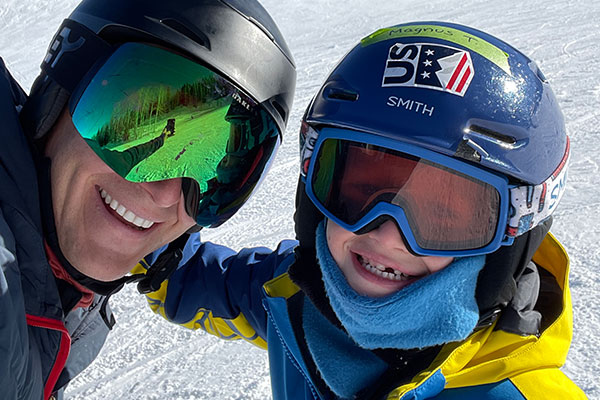
That’s where you say, “I’m testing to make sure our move replacement feature is still functioning properly.”
There is always that option. I get some form of feedback on how I’m not doing it correctly.
Getting the bench at the exact right depth for the dip and then making sure that you’re leaning forward enough to get pressure on both legs is a tough one. There is a lot happening there.
It’s a highly complex movement. It is one of the movements that when you do a rep and you feel right, it clicks. You know when you’re doing it wrong too. You go internal as you go down. You externally rotate as you go up. I feel balanced and controlled. That’s for 1 rep or 2 and then I struggle for the rest.
We’ll see how the rest goes.
You conk your head on the screen and you’re like, “I don’t think I’m doing this properly.”
I’m going for the assisted one where you hold on. There is a little extra balance support.
I’ll do that for the first one to get myself acclimated and then I’ll let go for two. I’m then starting to fall again and I have to grab.
Balance is not your strong thing. You need more balance exercises, Tom. That’s the thing. You got to do the things you dislike the most.
It is progressive overload. It’s something where you start with lunges, split squats or something simpler. Over time, we get better. Our body responds. We get better at single-leg balance. When you’re on in 2024, you are repping out Bulgarian internal rotation split squats.
Tonal makes big improvements in people's strength and power across all age ranges. Click To TweetIf members from Tonal want to build more muscles, how do you go about working with the coaches to build programs specifically for them?
If we were going to bucket our goals, the largest portion of our members does have the goal to build muscle. We are a resistance machine so that makes sense. The coaches and I, as we’re thinking about that, there are the principles that we talked about and then the levels of where people are. If you are a beginner versus someone that’s extremely advanced, the programming is going to be based on the same principles and metrics but they’re going to be applied quite differently.
The first thing we think about is consistency. How frequently can we get our members to train? How often do they want to train? That’s probably the biggest driver of long-term adaptations. If I train four times a week, one time in the other and I’m very inconsistent in doing that for a long period or I don’t train, that’s not great for anyone’s outcomes and goals.
We’re trying to match what people tell us with how frequently they want to work out, 1, 2, 3 or 4 times a week and what we’re programmed because of consistent things. That doesn’t mean that if we slip up and go away traveling, we can’t work. It happens to me as much as anyone else. Over the longer period, we want to help our members drive consistency. On any goal, that’s probably the single biggest thing that we’re trying to think about.
As it comes back to building muscle, the research and the programming that we’ll look to say is probably the biggest driver of building muscle is the amount of volume that you do per muscle group. If you want to build a bigger chest, the more sets of chests you do somewhat linear to a point that then it plateaus off, the more gains you will make. In my earlier point of individuality, my upper limit might be fifteen sets a week. That’s where I hit my upper limit. After then, I make smaller gains or no gains or I go over my maximal recovery volume and it is detrimental to me.
Crystal here can do 25 sets a week in terms of before she maxes out there. It is this volume of increasing volume on a volume. We want to make sure there’s a lot of volume or a decent amount of volume. That’s generally based on other principles. For our beginners, level volumes and more advanced people, there’ll be higher volumes. That’s based on our principle of diminishing returns. Once we get stronger, it takes a bigger stimulus to get a change in adaptation.
We’re looking to have volume in the program. Sets per week are the easiest way to think about that but you could think about the volume of sets times reps times weight. The amount that we lift over time needs to be pretty high. That’s probably going to be the biggest driver of hypertrophy. We’re going to be thinking around proximity to failure. This is where we are. We have this great suggested weights algorithm that gets you close to failure.
Ninety-two percent of the time is the acceptance rate. It is somewhere around there. We have this idea we’re getting you quite close to that range of failure, which is the perfect spot. If you do a set of 10 and you rated it 5 out of 10, that would suggest you could do at least 15 or more reps of that. It probably doesn’t stimulate hypertrophy muscle growth as the same as getting close to failure. Going to failure is a bit of a double-edged sword. There are some benefits to it. It’s not bad. It does elicit decent amounts of hypertrophy but it’s also fatiguing.
It also hurts your feelings.
You don’t want to go there all the time. It’s something that you should use selectively, maybe the last set and burnout or other things. Probably, if you’re first getting into strength training or building muscle, we are going to try and keep you away from failure more than you’re doing Divide and Conquer with Joe or something like that. You’re going to get there and like it. There’s an expectation of working hard but we are trying to work in that range. It will be 3 to 5 reps from failure, maybe 1 to 2 occasionally in going there. Proximity to failure would be another key parameter when we’re thinking about building muscle.
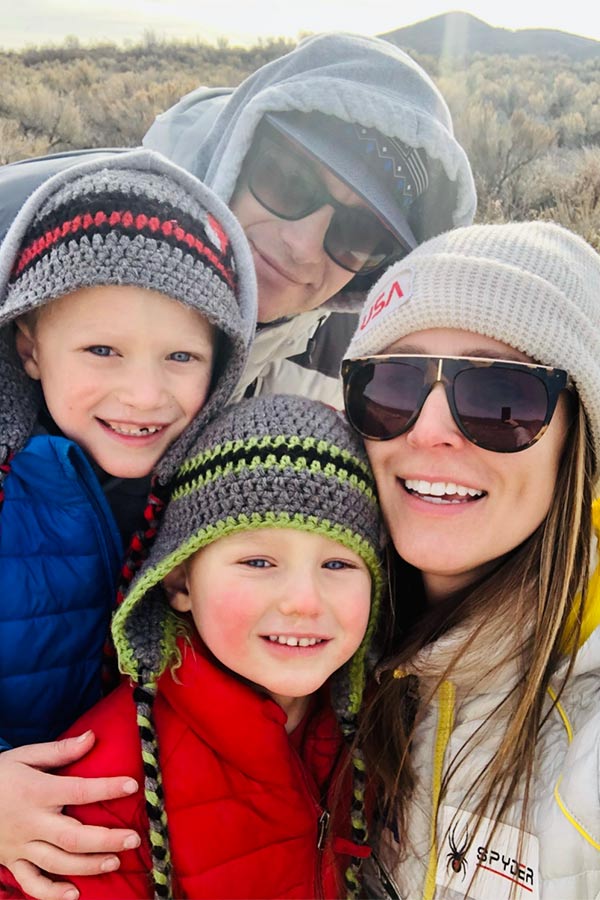
That’s smart though to get people close but not completely. I’m joking about it hurting your feelings but I’m also dead serious. You feel like you failed because you did. Especially if you’re new to it, you don’t perceive that as the goal. You perceive that like, “I suck at this. I shouldn’t do it anymore.”
There’s an element and you’ll notice you shouldn’t probably be in a ton of beginner programs. You’re more likely to be in some of our advanced programs. What our coaches do an incredible job with is coaching you through it like, “The expectation here is you will be using burnout mode because you will fail. Spotter is going to kick in.” They are making sure that we understand and contextualize that it’s not maybe going to feel that great but there’s a purpose to doing this. We’re not just doing this to make you feel bad but it’s a selective tool that we can use to help drive adaptations. The coaching role of that to set expectations for members is super important.
I’ll be honest. Suggestive weights give us a huge advantage in doing that. It makes it easy. There was a research study that came out in 2022 by James Steele and colleagues at Southampton. When people go into a gym, they select, on average, 50% to 55% of one RM. It doesn’t matter if they’re doing 6 reps, 12 reps or 20 reps. They select roughly, on average, the same percentage.
Most people are not going anywhere near close to their failure or near the kinds of stimulus that they need to grow. You wonder, “I’ve been training for six months and I didn’t make any changes.” A large part of my interpretation is that they never select the right load for the number of reps that they’re lifting. Suggestive weights help us out. It gets us in the zone more often than not. There are many other variables that play into that. One of the ones that I play around with and if you’ve seen any of my Custom by Tonal programming is I love to play around with rep ranges for building muscles.
The old theory years ago was that muscle building happens best in 8 to 12 reps. For anyone that wants to build muscles, you only work in that range. That is where you get your best. There is nothing wrong with working that range. What research shows is you can build muscle with probably as low as 5 to 6 reps or as many as 25 to 30 reps. People are cussing my name or the coach as the 25 reps hit. There are higher levels of displeasure with 25 reps and up. More swearing occurs.
There’s good evidence that working across a wide spectrum of rep ranges stimulates slightly different parts of hypertrophy. You get slow twitch hypertrophy or fast twitch hypertrophy. You hit different potential mechanisms of hypertrophy, like mechanical tension, metabolic stress or muscle damage. There is this way of playing around, which I find interesting, Tom, not painful. It makes the workout fun to have these wave variations of loading. It might be within a training session, between training sessions or even between weeks.
I like to play around with this wide range of rep ranges within a building muscle program to make sure that we challenge all aspects of the muscle. To go with that becomes all different planes of motion. You get a slightly different activation of an incline fly versus a mid-fly versus a decline fly. On Tonal, you can hit them all. We can program in varieties of movements that allow us to do that. We play around with lots of different types of movements. It’s working the same muscle but in a slightly different way.
In the first couple of weeks of a program versus the last couple of weeks of a program, we might substitute our move. It’s primarily for that. It’s working the same muscle group but we’re working at a slightly different angle or plane of motion. It will stimulate a slightly different pathway of hypertrophy or building muscles. Those are probably some of the biggest things we think about.
I love that last piece you talk about mixing things up because whenever I do programs that involve different rep structures or slightly different movements, it keeps me more engaged with the program. I like the fact that you’re still using the same muscles but you’re hitting it from different directions and trying it in different ways. I enjoy that as a user. I feel like that’s the best of both worlds. You’re getting to do the same work over and over again to see that improvement but you’re also getting to do something a little bit different to keep it a little more interesting. I’m a fan.
Point number one is consistency. We have data and evidence suggests that some people and the majority of people like some variety. Our ability to weave that into the program makes it more likely to be engaged. There was a portion when you come out of school and you’re like, “This is the best way to do it.” It might be the best way to get a physiological response but if no one wants to train that way, does it get the best results for the members? What we get to play around with is we want to match the best of the physiology with what our members are telling, “We enjoy this style of training.” That’s where the magic happens.
The biggest driver of building muscle is the amount of volume that you do per muscle group. Click To TweetOn that note, can you tell us about anything exciting in the pipeline, maybe a little bit?
I always used to get in trouble with Kate on Tonal Talk because I’m like, “Have we dropped this feature yet or that program?” I get myself in trouble. I’m going to try not to do that in this episode. We did announce the big thing for all of this internally and externally, the Four-Week Fast Track and Squat Challenge. The Sculpt & Shred, on June 5th, 2023, that program will launch. I’m super excited about that. The coaches, Jenna who’s on my team, and I put a lot of work into programming. We created something we think the members are going to love.
It’s an interesting program because what we’re doing is we didn’t take a straight get lean. It’s a get-lean program. Summer’s coming. People want to maybe shed a few pounds. We took this approach of it is 2 days of what we might call more traditional strength training and 2 days of more high-intensity interval training. We dropped some stuff through German body composition training, German ascending velocity training and some new novel ways of doing it.
It’s a new program style. That gets the best of both worlds in our pacing. You’re going to get the calorie burn, the high-intensity energy and the fear from the HIIT days but you’re going to make sure that you are building or maintaining muscle mass through the strength training day. I’m super excited about that program. The coaches did an incredible job pulling that together. That’s going to be super exciting come June 5th, 2023 when that launches. We’ve announced that because I’ve seen the adverts. That’s good.
I talked about Custom by Tonal. We launched that initially in January 2023. I love this program because it’s member-driven. It was one of the Feedback Fridays where it was like, “We would love this more coach-like version of us to be a bit quicker,” in terms of our programming. It is pretty bare bones. We launched a program.
We asked for additional feedback, got some emails, made a couple of changes and released some more. We went on and did that. Ackeem was the first program. Coach Ackeem dropped a two-week called Shock Push-Pull Legs or Shock PPL. It’s based on something called the Poliquin Shock Method. The first block has 6 reps, 12 reps and then 25 reps. It has got lots of variety for you.
It will shock you and then you go on to the rest of the training sessions. It is a walk in the park after that. Coach Ackeem is doing the stand-ups and the introductions there into the custom experience. It’s been fun and exciting to work on that and get lots of member feedback. We went from having what we had the mini-coach and the mini things to a full screen. We’ve added in the coach and warmups. We were playing around and taking lots of member feedback on how we built that out.
We released the first program, continue to iterate and take more feedback and learnings as we build that into a new additional content format. It is a new way to enjoy Tonal. Some people that maybe do more custom and free lifting might enjoy it. People that are doing programmings might mix in and do some of that. It’s another option. It’s another way to provide value to our members and to do that. I’m super excited about that program that’s releasing and that pathway ahead. Those are a couple of ones that I’m allowed to talk about but there are some other fun product-related stuff that I will not get fired for here.
We will wait until your next visit to find out more.
I feel like if there are 25 reps, I’m going to need more than 2 weeks to complete that program.
There's good evidence that working across a wide spectrum of rep ranges stimulates slightly different parts of hypertrophy. Click To TweetIt’s one rep a day.
I’m like, “This is too long. I don’t have time.”
Burnout mode is on. It is intended to be used.
I bet you need it. I love the two-week program because we’re going to be out of town. Those 2-week ones are perfect to drop in whenever 4-week ends at a weird, awkward time. I like those two-week little hard-hitting ones.
There’s such value in all the different workouts whether it might be a 1-off workout, a 2-week program or a 4-week program. We even have something in between that. People’s schedules are varied. As a physiologist, I put my academic hat on and be like, “This is the best way.” That’s not how my life works. I’m like, “I need a lighter program this week. I only have a week before I travel for that ACSM Conference.” Providing variety is essential. It’s fun to work on those different projects.
I love keeping it real for people. Sometimes, people get in their heads about the black-and-white thinking where it’s like, “I must do this four-week program. I can’t stop in the middle and do this other thing.”
I’m like that. I would never stop in the middle.
You have to sometimes.
In academics, we call it flexible cognitive restraint. If you are very strict like, “I must do this workout every day,” what we find is if you fall off the wagon, you are off. Flexible cognitive restraint is, “I want to do this but sometimes, I go and eat pizza more than I probably should. That’s okay. I might do a little lower tomorrow.” I have this ability to adapt. Sometimes, I train hard and I hit everything that I wanted to. Sometimes something came up and my kid woke me up at 3:00 AM and I can’t do it. It’s all about not falling off the wagon and staying off the wagon.
There are flexible cognitive restraints in things but the flexibility within that is super important to sticking with exercise regimens. It’s not always easy. We all have some highs some lows and some pieces. Having that flexible cognitive piece to it and then the programming that allows you to be flexible is the combination.
There are flexible cognitive restraints in things, but the flexibility within that is super important to sticking with exercise regimens. Click To TweetThank you so much for joining us. Before we let you go, let everybody know where they can find you.
Since we last started, I started an Instagram account @StrengthScienceTroy. I started in December 2022. I will be honest. I posted every day between December 2022 and March 2023 and burnt myself out. I’ve been taking a little downtime since.
You need a cognitive flexible Instagram thing.
I was like, “I’m ten years late to this. Let’s throw everything I’ve ever thought about at it.” I’m starting to ramp that back up on a more realistic approach of once or twice a week on how we do that. We still have the TSI section on the website on Tonal. Those are the places you can mostly find me.
Thank you so much for your time, Troy. This was super informative. I already can’t wait to have you back on to pick your brain some more. Thank you.
I’d be happy to. I appreciate you having me back on.
We always enjoy it.
Thanks for carrying the load, Tom, as always.
That’s what I do. I’m a load carrier.
—
That brings this episode to a close. Until next time. Where can people find you?
Disney World.
That’s where I’ll find you. That’s expensive access. It is $100 and they got to hope they pick the right park.
Also, on the right day at the right time. We’re quick. Good luck tracking us down. If you want to do it a different way, that’s easier. You could go to Facebook.com/CrystalDOKeefe. You could go to Instagram and Twitter or check me out on the Tonal leaderboard, @ClipOutCrystal.
You can find me on Twitter, @RogerQBert or Facebook at Facebook.com/TomOKeefe. You can find the show online at Facebook.com/SupersetPodcast. You can find me then on the Tonal, @TomOKeefe because I’m very creative. That’s it for this one. Thanks for reading. Until next time. Keep lifting.
Important Links
- Apple Podcasts – The Superset
- Spotify – The Superset
- Google Podcasts – The Superset
- Facebook.com/SupersetPodcast
- YouTube.com/TheClipOut
- Facebook.com/CrystalDOKeefe
- Instagram – Crystal O’Keefe
- Twitter – Crystal O’Keefe
- @RogerQBert – Twitter
- Facebook.com/TomOKeefe
- Tonal
- @StrengthScienceTroy – Instagram
- Tonal’s Strength Institute
Love the show? Subscribe, rate, review, and share!
Join The Superset community today:
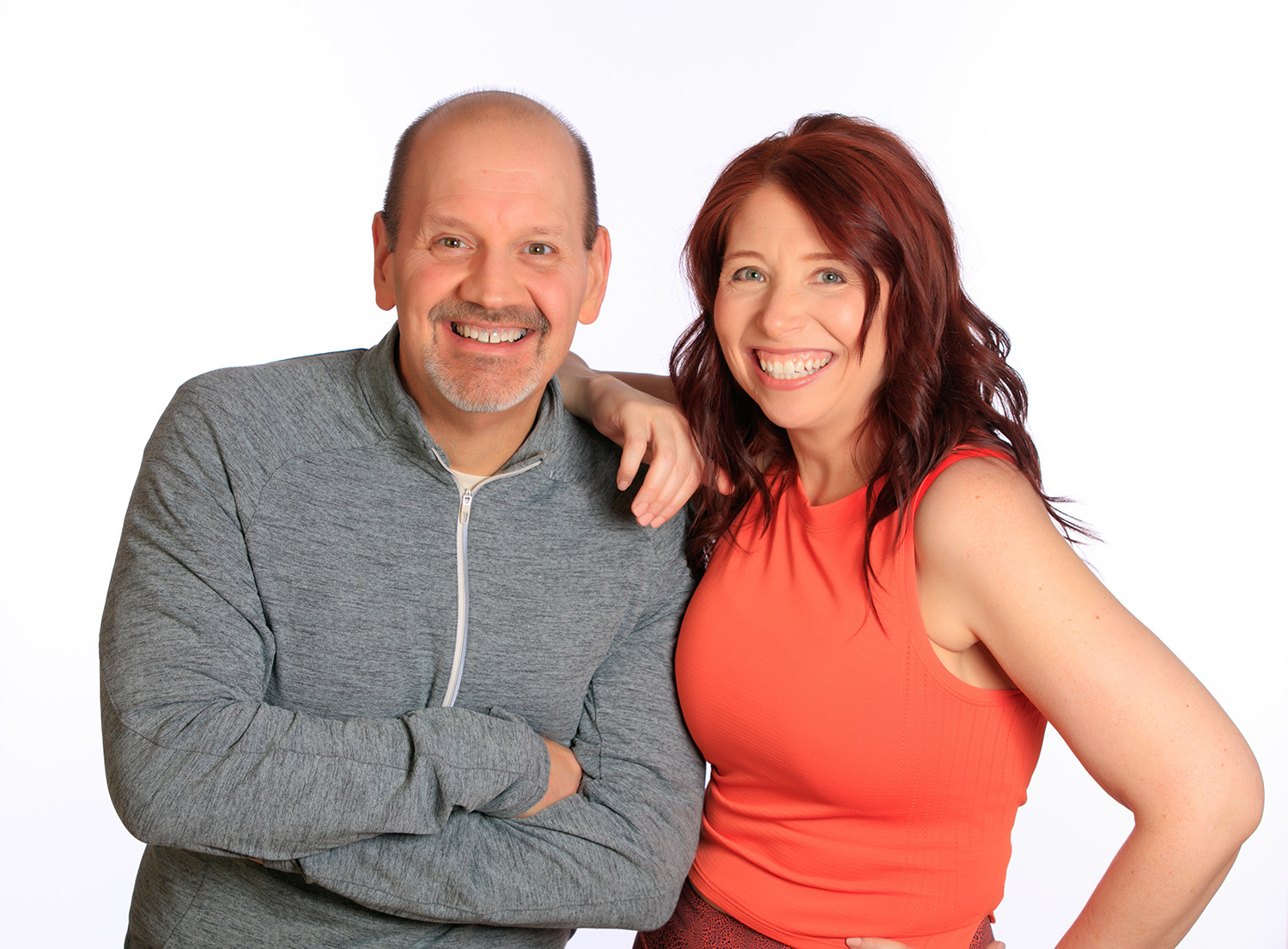
Subscribe
Keep up with all the Peloton news!
